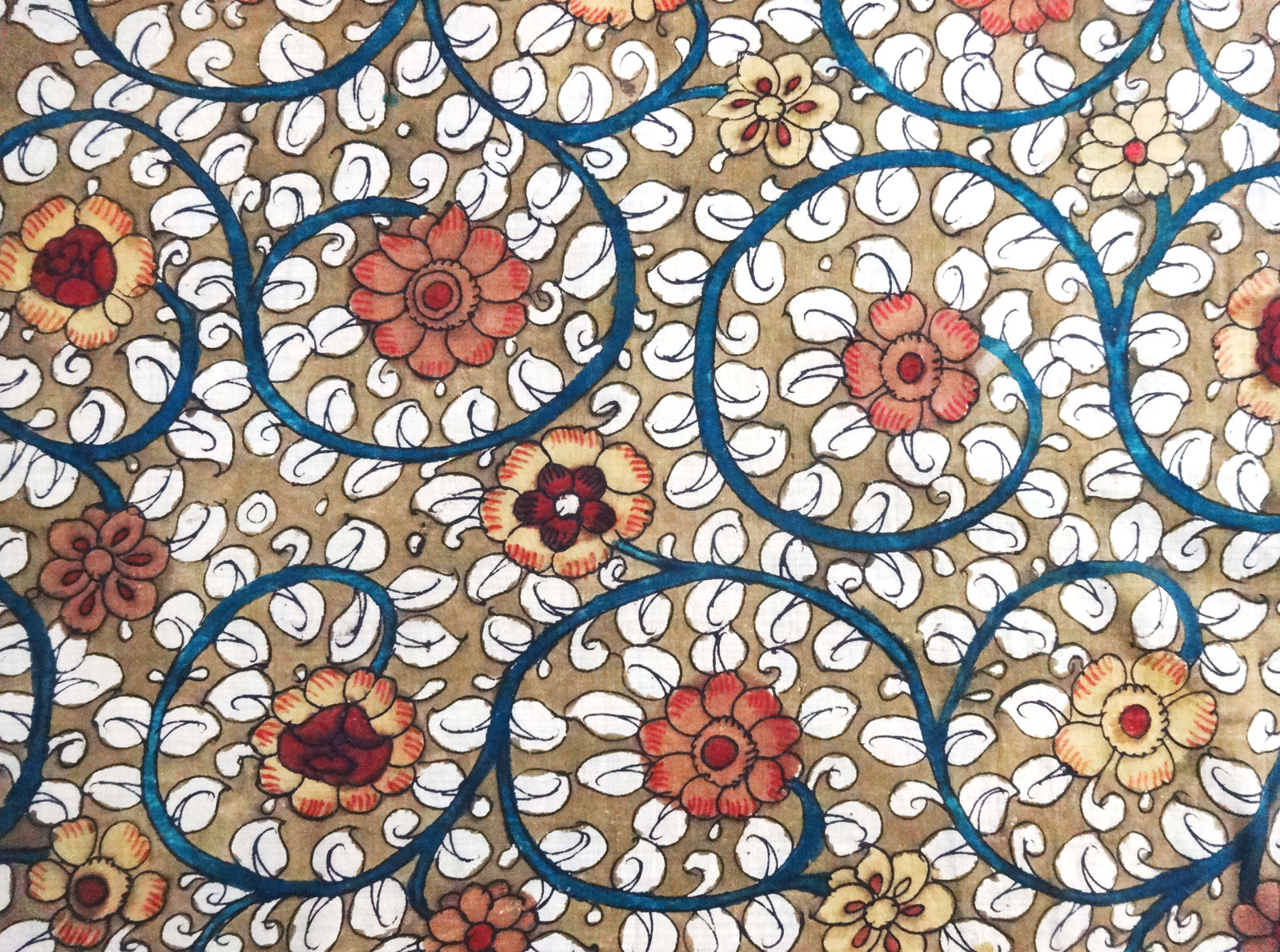Design by Design House Angikam by Banasri Rao, painted by M.Viswanath Reddy, photographed by Aastha Gandhi
Leveraging Justice
Editors Janelle Reinelt and María Estrada-Fuentes
Issue 5.2 (Fall 2016)
This issue will explore how best to leverage justice for victims of trafficking, child soldiers, illegal immigrants, the poor, and others who lack recognition and protection within the legal and social apparati of national governments and non-governmental organizations. This topic emerges from a two-year research collaboration on Gendered Citizenship between Warwick University and Jawaharlal Nehru University. We intend to probe three critical arenas of practice: state agencies and NGOs providing support services and recovery programs to survivors which incorporate performance as a therapeutic experience; the policy arena where legislation and program designs originate; and representations of victims’ experiences appearing in theatre, media, or other public venues. Of key concern is an analysis of how these practices interrelate to secure justice (or not) for survivors.
Performance resonates through several layers of this topic. The exploited themselves perform: first for their captors, then later for their sponsors (funders, agencies, state agents). Attempts to aid survivors incorporate performance as a therapy (such as Dance Movement Therapy with trafficked survivors), and a number of performance groups create work in order to make visible the plight of the exploited, give voice to the silenced, using performance as a form of activism. However, the ethical problems entailed in these performances are substantial: certain types can be coercive, unproductive, or even reproduce aspects of the original exploitation. Absence of a plurality of performances or alternative types of performance may in some cases diminish or impede justice. Organizations or agencies are often caught between their goals of aiding survivors and the legal, financial, or structural pressures under which they operate. Seeking justice for victims through performance thus entails a fluctuating proportion of “costs” and “benefits” which must be weighed.
To “leverage” justice is to invoke a metaphor that suggests multiple meanings: 1) to put pressure on existing systems and organizations in order to secure justice; 2) to employ “justice” as an organizing concept to influence public opinion, state legislation, and political action; 3) to engage with an analysis of weights: as the “scales of justice” weigh the balance of competing elements of grievance, injury, responsibility, and redress to respond to the complexities of context and action, leveraging is an intentional “weighing and weighting” of some persuasive and determining actions, arguments, or performances. Framing the issue through Iris Marion Young’s concept of a social connection model of global responsibility, the issue asks with her, “how shall agents, both individual and organizational, think about our responsibility in relation to structural injustice?” 1
Here are some of the key questions to be addressed in “Leveraging Justice”:
- How do the complexities of different nation states and cultures complicate attempts to define the issues?
- What ethical considerations govern issues of witnessing and representation of survivors in artistic work? In public journalism or media?
- What contribution can performance make to public knowledge of, legal support for, and policy priorities regarding structural violence against women and children across a range of predicaments (trafficking, homelessness, labor exploitation, rape, etc.)?
- When artists work with these fragile and injured subjects, what protections are needed to ensure their privacy/security/dignity?
- When performances representing real events or situations circulate in the public domain, what problems emerge for the subjects and the performers?
- How do organizations negotiate the neo-liberal market demands of governments and funding bodies to produce clear narratives of victimization, and clear outcomes of survival success? How does the pressure to succeed and show “impact” press on the aesthetic and activist intentions of artists and groups?
- How “joined up” are these questions for artists, scholars, and groups working on different and specific issues (e.g. trafficking, homelessness, child soldiers, domestic service exploitation, rape)?
Contributors to the special issue:
Debra Castillo, “Beds and Tables: Ordinary Violence in Rascón Banda’s Hotel Juárez”
Emma Cox, “Gendering Irregularity: Migration and Performance”
María Estrada-Fuentes, “In the Battlefield: girls, love and sex during wartime in Colombia”
Jenny Hughes and Carran Waterfield, “‘Sing for your supper’: pauperism, performance and survival”
Maggie Inchley, “Touring Testimonies: Partnering Performance with Human Rights Activism”
Silvija Jestrovic, “The Maid Vanishes: Performing gendered citizenship in the context of work-related migration” (a photo essay)
Urmimala Sarkar Munsi, “Mediations around an Alternative Concept of Work: Re-imagining the bodies of survivors of trafficking”
Jimmy Noriega, “Las Poderosas Teatro: Bodies of Extraordinary Survival”
A.P. Rajaram, “Remembering Sadir: Reclaiming Presence”
Janelle Reinelt, “When is ‘Labour’ a Coerced Performance? Trafficking, sex work, and consent”
Analola Santana, “Circuits of Invisibility: Performance, Violence, and Sexuality”
Sofie de Smet and Marieke Breyne, “Abstract Precariousness and the Performances of Welfare”
In addition:
María Estrada Fuentes and Urmimala Sarkar Munsi interview Sohini Chakraborty, Director of Kolkata Sanved (an NGO using Dance Movement Therapy in the treatment of survivors of trafficking and other sexual violence)
Maria Estrada Fuentes presents her diary reflecting on an intership at Kolkata Sanved
Ameet Parameswaran and Shirin Rai, “Dispatches from Delhi” on the recent troubles at JNU and the “anti-nationalist” debates
Notes
- Young, Iris Marion, Responsibility for Justice (Oxford: Oxford University Press, 2011), 95. ↩
